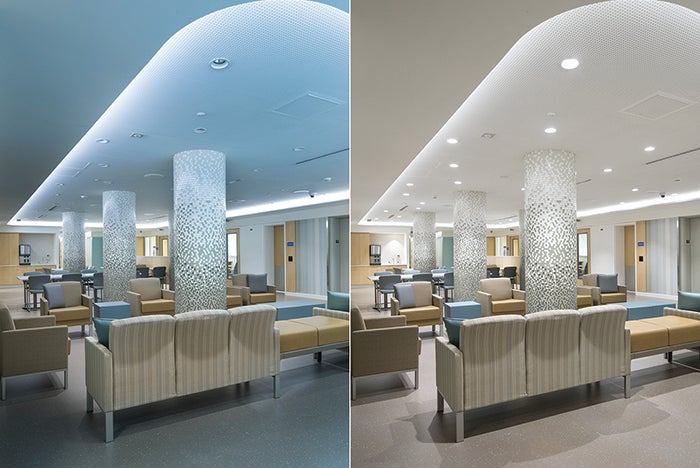Circadian lighting creates calm in behavioral unit

Swedish Medical Center’s lighting system adjusts to natural sleep and wake cycles.
Photo courtesy of ZGF Architects
The 22-bed behavioral health unit within Seattle’s Swedish Medical Center was designed to promote patient healing and safety through a calming work environment for staff.
ZGF Architects LLP worked with the medical center on a number of design elements to help achieve that goal, including additional acoustic insulation to reduce noise, color schemes and textures to evoke the nature of the Pacific Northwest, and durable yet aesthetically pleasing furniture.
It also incorporated circadian lighting into the 15,605-square-foot space. Circadian lighting is light that synchronizes to natural sleep-wake rhythms to promote calm as the day comes to an end.
After a year of operation, ZGF conducted a post-occupancy evaluation study to determine if the design techniques, especially the lighting, had actually accomplished their intended purposes. The firm surveyed 25 behavioral health-unit providers to assess the health care facility’s design, and the results were positive. The researchers say that the calming light during the evening hours influenced attitudes about the calming nature of the patient rooms and the overall patient unit.
Sixty-nine percent of the providers reported that the lighting was calming in the evening, while 77 percent reported that patient rooms provided a calm retreat. Seventy-one percent said that the unit environment was calming.
Overall, 69 percent of the staff reported being satisfied with the lighting comfort and that the lighting’s sleep and wake cycles were consistent.

